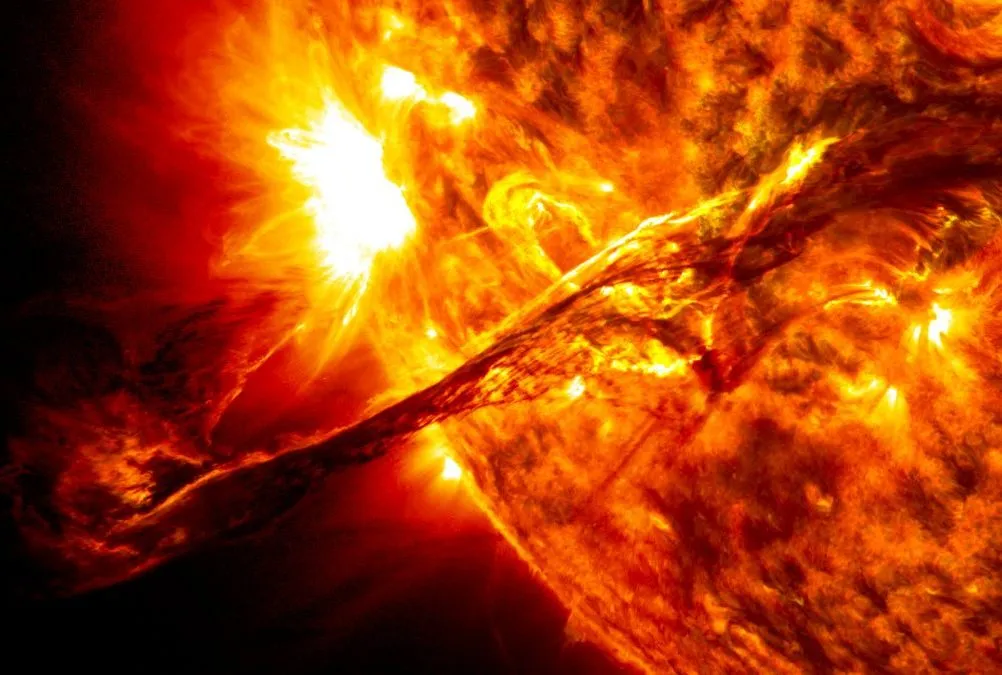Solar Flare History: Earth’s Largest Recorded Solar Storms and Their Impact

Solar flares are among the most awe-inspiring and impactful events in our solar system. These massive bursts of energy from the Sun don’t just light up the space around us—they can send highly charged particles racing toward Earth, disrupting satellites, power grids, and even daily life on our planet. But how extreme can these events get? Recent studies have revealed that the most powerful solar flare and related storm may have struck Earth over 14,000 years ago, challenging our understanding of solar activity.
What Is a Solar Flare?
A solar flare is a sudden, rapid release of energy on the Sun’s surface, often followed by a coronal mass ejection. This explosion emits radiation across the electromagnetic spectrum—from radio waves to X-rays. When such energetic bursts move toward Earth, they're called solar storms or geomagnetic storms. These events can trigger dazzling auroras but also bring risks to modern technology.
The Biggest Solar Flare Ever Recorded
In a groundbreaking study, scientists recently identified a massive solar particle storm that struck Earth in 12,350 BC, at the end of the last Ice Age. By analyzing tree rings and radiocarbon spikes preserved over millennia, researchers concluded that this ancient solar flare was over 500 times stronger than the largest event directly observed in the modern era.
A detailed report from BBC Sky at Night Magazine reveals how scientists traced this event through radiocarbon dating and tree ring analysis. Using advanced models, they confirmed that the Sun fired a barrage of high-energy particles at Earth, redefining the upper limits of known solar storms. Other major events occurred in AD 775, 994 CE, and several times before the Holocene epoch, but none matched the scale of the 12,350 BC event.
How Scientists Uncover Ancient Solar Storms
Solar flares leave a unique mark on our planet. When energetic particles from the Sun collide with our atmosphere, they enhance the production of cosmogenic isotopes, like carbon-14. Trees absorb this radiocarbon, preserving a record in their growth rings. By studying these rings, researchers can pinpoint the exact years of such solar storms.
A study published on ScienceAlert explains how new chemical-climate models, including SOCOL:14C-Ex, have allowed scientists to reconstruct ancient solar flare timelines. These models were validated with known events from the past 12,000 years and applied to glacial conditions to confirm the extraordinary intensity of the 12,350 BC storm.
Why Solar Flares Matter Today
Solar flares aren’t just historical curiosities—they remain an active threat to our infrastructure. Major solar storms, such as the Carrington Event of 1859, have previously caused telegraph failures, fires, and widespread technological disruptions. Recent research suggests that understanding past extreme events is crucial to prepare for future solar storms that could potentially disrupt satellites, communication networks, and power supplies. Modern society is far more reliant on vulnerable technologies, making knowledge of worst-case scenarios vitally important.
For more in-depth scientific analysis, visit Sci.News, which details how solar particle storms—sometimes called Miyake events—help scientists date ancient artifacts and learn about solar behavior across millennia.
The Takeaway: Learning from the Past
The discovery of the ancient 12,350 BC solar flare expands our understanding of how powerful the Sun can be. By looking to the past, researchers gain valuable insights that help us protect modern technology from potential solar disasters. As we continue to study tree rings, ice cores, and cosmic signals, we remain better equipped for the next great solar flare.
Stay informed about space weather and the science behind solar storms. Explore the latest research and preventive strategies to keep our world safe from the Sun’s most powerful outbursts.